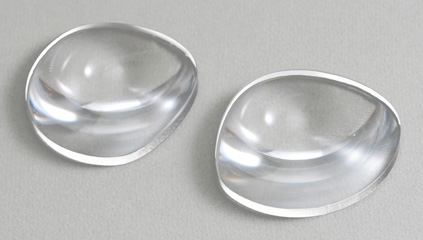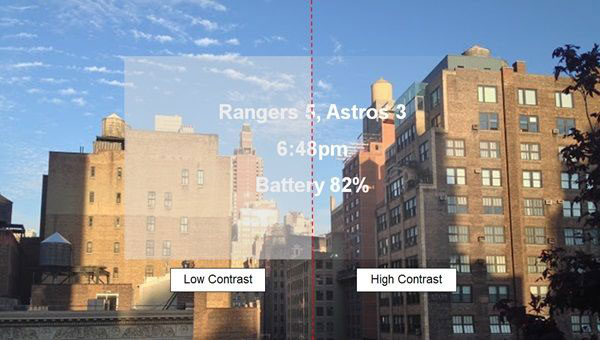

A wide variety of virtual reality (VR) and Augmented Reality (AR) near-eye display (NED) solutions currently under production, and digital content and physical world to bring the visual experience seamless feasibility of fusion also continued to increase.

A wide variety of virtual reality (VR) and Augmented Reality (AR) near-eye display (NED) solutions currently under production, and digital content and physical world to bring the visual experience seamless feasibility of fusion also continued to increase. Let is look in-depth design stunning see-through near-eye display, when some of the most seamless integration with the digital world and the physical world are facing challenging problems.
In many cases, near-eye display technology optimization solutions not just a "a better" problem, but we can decide important issues availability. Imagine a surgeon or medical specialist in emergency medical treatment when wearing the near-eye display as an auxiliary tool. In this environment, a clear, unobtrusive visual experience is essential. Or, imagine a video game player, in order to provide seamless, real-time experience, it requires very low latency display. In both cases, realistic visual experience depends on minimizing the display image latency (delay), to maximize optical contrast and viewing angle is increased information (FOV).
The key to create a real-time experience - the display delay
Consider first delay system, many system-level components will have a delay, together that is experienced by the user to delay. To this end, we look at the display engine related parts, and can be divided into two parts:
Display (pixels) pixel data update delay = time + switching time of the pixel
The first part is called "pixel data update time", the display device is a new data value "loading" display pixels used time. For many display engine structure, which is like one or more frames periods, as measured from the input to the engine. If a delay for the 60Hz source is about 16.67 ms, which for many modern display technology is a common thing, which includes a frame memory for easy image processing. For some display engine, may be updated pixel data is two or more frames.
The second section shows the delay is "pixel switching time", which is a pixel from the current state (on or off) anti-state switch to the time spent. When the pixel adequate precipitation, a human observer can clearly perceive the new data, the pixel switching time ends.
Texas Instruments DLP Pico chip has the fastest existing speed pixels per second flip each digital micromirror (pixels) thousands of times, thereby reducing the delay display, supporting up to 120Hz display frame rate, while maintaining high quality.
In addition to providing real-time low latency experience, the ideal near-eye display solutions should provide transparent content, high-definition, it does not inhibit the real-world perception of the end user. For example, if the data to be displayed using only 20% of the pixel array of the display device, then the remaining 80% will actually not visible to the user, and then fused with the digital content with the real world.
Importantly, in the perspective near-eye display optical system, the image is not displayed in a translucent surface (ie, the glasses). Because, by definition, very close to the surface of the user is eyes, displayed on a translucent surface is invalid, the human eye can not focus on comfort so close to things. The optical system is not created on a surface of the image, but the formation of the pupil, the eye acts as the final element in an optical link - so as to create the final image on the retina of the eye.

A general perspective NED type optical system comprises a waveguide optical element for collecting light input, passing the human eye. This arrangement is not only necessary for the formation of the pupil can also locate micro-display, optical and lighting, without prejudice to the user is sight.
Now that we understand the optical system, then, how do we ensure the transparent area of the image to be displayed without prejudice to the user is sight of it? The best way to achieve this is to maximize increase the contrast of the optical system. Here is a picture shows the contrast of the display can bring impact, which is near-eye display seen by the user.

Design of the near-eye display many elements can affect contrast, including the number of aperture (f value) and the availability of advanced image processing algorithms in optical design. For some of the micro-display device, the fill factor will also affect the contrast, but usually the impact is lower.
f-optical design described the incident than the lens focal length of the through-hole diameter. Higher f value can get higher contrast - and reduce complexity and reduce the size of optical. Although the high value of f can bring higher contrast, it must also be balanced with the requirements of the perspective - not only because of the higher value of f increases contrast while also reducing perspective.
By RGB backlight (ie brightness LED) intelligent management, combined with digital gain for each image frame acquired, advanced image processing technology can improve the contrast. For example, Texas Instruments DLP Products TRP chip has IntelliBright algorithms, including being called content adaptation of illuminance control (CAIC) function. According to the image content and ambient lighting conditions, the algorithm can intelligently adjust the brightness of the image.
This will not only produce the best image brightness and contrast, but also make the system optimal power consumption; this is a near-eye display technology is another important advantage.

The human eye has a horizontal viewing angle of almost 180 degrees. Augmented Reality headset device typically has a viewing angle of 20-60 degrees, which is sufficient to produce a natural viewing experience. In contrast is the perspective of a typical small penetrating eyes intelligent solutions so that the user must periodically unnatural to pay attention to it. Most near-eye display trend perspective applications is the larger perspective. Larger perspective can also allow users to more content and nature observation of the real world overlap display, which provides a higher quality visual experience.
Perspective is usually subject to the control of three key design elements: an array of micro-display diagonal size, the optical waveguide end and f value of pupil size. These factors to consider trade-offs between relationships: diagonal size larger arrays will provide a higher perspective, and in most cases also offer higher resolution, but it also increases the volume of the system, because of the angle line size usually translates into a larger optics. F lower value will produce greater optical design perspective, but also increase the size and lower optical contrast. With the increase in pupil size, viewing angle decreases. For example, 5 mm pupil can get 45-degree viewing angle, and viewing angle 10 mm pupil in the case of the same f value obtained is less than 25 degrees.
For still under development in the perspective of many near-eye display solutions, providing digital content experience seamless integration with the physical world of the visual is very important. Design challenges require a direct impact on end-user experience of the factors to make trade-offs.
SMC Multi-Media Products Company Ltd. (SMCMM)
Hong Kong Address :1/F, Shell Industrial Building,12 Lee Chung Street, Chai Wan, Hong Kong.